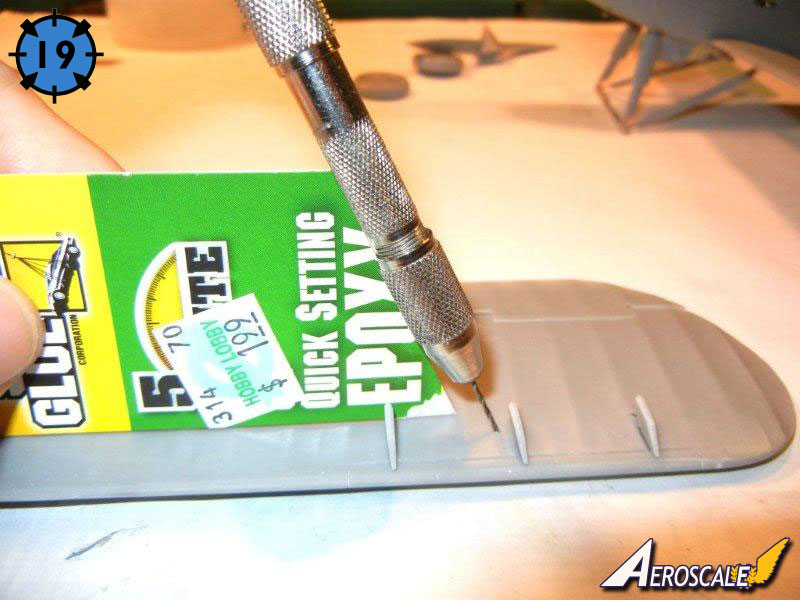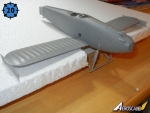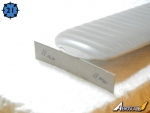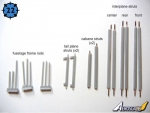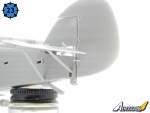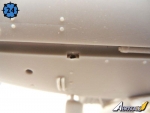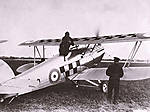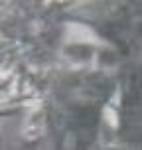1⁄32Silver Wings Hawker Hart Review Build
8
Comments
Lower Wings
Before attaching the lower wings, you may want to test fit your radiator, and sand the mating surface as needed to ensure that the brackets fit properly. Once you are satisfied with the fit, you will want to drill out the interplane strut attachment holes at a slight angle outwards and forward. If you wish, you can make a drilling angle template from a piece of cardboard using the drawing on page 8 of the instructions (see photo 19). You may also want to drill out your rigging attachment points, depending on your rigging method of choice. Note that the Hart, like many British biplanes of the Interwar era, did not use external turn buckles, rather these were hidden beneath the surface of the wing.Test fit each wing to the fuselage. Once you are satisfied with the fit, you are ready to attach them. The instructions kindly let us know that the bottom side of the wing tip should be 11mm higher than its attachment at the fuselage. An easy way to ensure proper fit and dihedral is as follows.
Using an old kit box, or some other thin cardboard, cut two 11mm strips. Then, using some old styrofoam; Legos; or your favorite jig material, set up your jig so that your landing gear will not interfere with your fit. Test fit both wings, and slide your 11mm cardboard strip into place under each wing tip. If all looks correct, remove the wings and glue one wing into position, sliding your 11mm strip under the tip. Once this wing has set, repeat the process for the opposite side. See photo 19 and 20.
Struts
Now is a good time to familiarize yourself with the struts provided in the kit. In photo 22, you can see we have interplane struts (wing-to-wing); cabane struts (upper wing -to-fuselage) and tailplane struts. Note that the tailplane struts are different lengths, with the two longer struts being the forward pair, and the shorter the rear pair. The same applies to the cabane struts, the longer pair go forward, and the shorter pair go towards the rear. With the interplane struts, the 2 shorter struts are the middle almost vertical struts, with the remaining 4 being the forward and rear struts as indicated (note the slight difference in the notch at the end of the strut – which faces the middle strut where they attach).Rear Empennage
The tailplane and rudder can be attached at this point, or after you have attached the upper wing (or even later if you need to paint stripes on your rudder). Depending on your material of choice for the control lines, you can either attach them to the fuselage at this point, or after painting/decaling. You may want to drill some holes in the horizontal stabilizer where the control lines attach to make it easier to do so, as well as drill holes for the rigging material of your choice.■ The instructions indicate that when you attach the main horizontal stabilizer, the vertical stabilizer has a rod that should fit in an indent at the back of the horizontal stab. However, I found that if I aligned these two parts, there was a bit of a gap at the front of the horizontal stab. I enlarged the hole a bit towards the rear, and everything fit fine. Note that there is a small post that needs to be placed between the fuselage and the horizontal stab, aligning with the aforementioned rod on the vertical stab. You may wish to drill out the hole for this rod in the fuselage, and place a longer than necessary rod in the hole. You can then pull it up from the fuselage to attach it to the horizontal stabilizer, ensuring a perfect fit without the need to measure.
■ With the horizontal stabilizer in place, you can now attach the support struts. As mentioned above, the two longer struts are the forward ones, and the shorter ones are the rear. I cut the attachment pins off the bottom of the two rear struts, as they meet inside the hole in the fuselage. I did find that I needed to keep the all the pins on the forward struts; otherwise they would have been too short.
■ Once the main horizontal stab is on, you can attach the control surfaces. Don’t forget to attach the control horns to the elevators and rudder prior to attaching them to the rest of the rear empennage. Photo 23 shows the completed rear empennage.
Comments
Nice to see some "Tweeners" being released. Nice too to see a two seater.
Do they do a Fury or a Demon?
Cheers,
Hugh
AUG 16, 2011 - 01:16 AM
Hi everyone. Thanks to Rowan for inviting me to post this "build guide"/review here.
I wanted to see if I could get some feedback on what your thoughts are on this type of review. Is it too long, too short, too detailed, not detailed enough etc. Is there any benefit to you, the reader, in seeing the build without paint, or would you prefer to see it painted?
This is the first review of this type I have done, so please let me know how I can improve it - don't be shy - I am a big boy and can take harsh criticism if necessary!
Thanks!
Doug
AUG 17, 2011 - 09:03 AM
Hi again
I always used to read Model Aircraft Preview, and found their "nothing to hide behind" style really useful in judging a kit - often more so than a finely finished model that often said more about the skills of the builder than the quality of the kit.
We've seriously considered running reviews in this style on Aeroscale in the past, so I'd also be very interested in seeing readers' feedback on it and whether it's something you'd like to see us do regularly for standard releases.
All the best
Rowan
AUG 17, 2011 - 10:41 AM
Doug and Rowan,
I found this review very informative and probably just a tad too long although for the subject in question it may be right. I think without seeing this done on another subject, never having seen the magazine in question, it is hard to judge.
The one question I have is what do you do with the made up kit now as you can not get inside to paint the interior? Myself I would not want to do this type of review but yes I did find it helpful.
AUG 17, 2011 - 11:47 AM
Hi Luciano
Probably the reason more people aren't prepared to do a review like this is that the kit truly is "sacrificed" for the sake of showing how well it fits together (or otherwise). It sort of goes against every modelling instinct - a really tough decision to make, especially with a limited edition resin kit like this one!
All the best
Rowan
AUG 17, 2011 - 11:59 AM
Building it with out painting and filling is helpful, and shows how the kit really is, and how much work is needed correcting seam lines and whatnot.
I have done the same type of review myself with a HobbyBoss F-16D Fighting Falcon , and although I did enjoy building it this way, it's not something I would like to do on a regular basis, unless I had two of the same kits and one could be "sacrificed" (but how often is that going to happen ).
Andy
AUG 18, 2011 - 02:56 AM
Nice review Andy!
@ Luciano - this kit will likely never see paint, as it has served its purpose as a review kit. I actually think it looks pretty good as is, but I just need to figure out where to put it
@ Hugh - Montex did a 1/32 Fury which was mastered by the owner of Silver Wings before he started his own company. Ali @ A2Zee Models is now is the vendor for this kit and sells it with upgraded metal struts and proper 43 squadron decals. No one does a Demon that I know of, so if you really want one, you'll need to convert the Hart to get one
Regarding reviews, I personally find it easiest to do the non-paint (and non-rigged for biplanes) reviews as I can get it done much faster when I don't need to plan painting/filling/decaling etc into the mix. And as some of you mentioned, the benefit is the reader gets to see how the kit is without anything "hidden" by filler and paint.
As I was given this kit to review, and I have my own copy in the stash, I thought this review would be a good way to get to learn about the kit, and provide a useful review at the same time. I think doing the review kit this way will help me do a better job building my own Hart kit
I'm currently working on the same type of review for the Silver Wings Gloster Gladiator, and I'll submit it for posting once it is complete.
Thanks for your comments (and for anyone else that wants to provide feedback!!) and to the emailed comments I received as well.
Cheers,
Doug
AUG 18, 2011 - 09:35 AM
Copyright ©2021 by Doug Nelson. Images also by copyright holder unless otherwise noted. The views and opinions expressed herein are solely the views and opinions of the authors and/or contributors to this Web site and do not necessarily represent the views and/or opinions of AeroScale, KitMaker Network, or Silver Star Enterrpises. Images also by copyright holder unless otherwise noted. Opinions expressed are those of the author(s) and not necessarily those of AeroScale. All rights reserved. Originally published on: 2011-08-11 00:00:00. Unique Reads: 11932




